San Antonio, New Mexico: a town that was dealt a bad hand.
In it’s hay day, the small town of San Antonio, New Mexico boasted a population of around 1250. Over the years, a series of natural disasters and unfortunate world events has left the town with barely 100 residents.
To quote the late Kenny Rogers, “Know when to walk away, know when to run”.
A brief history of San Antonio, New Mexico
You know how some business locations just seem cursed? One business after another moves into the space but they all close within a year and no one seems to know why? The town of San Antonio, New Mexico is a little like that.
San Antonio’s history dates back about 700 years, well before anyone called it “San Antonio”. Originally the area was settled by Piro Indians when they built Senecu Pueblo there on the west bank of the Rio Grande River. It was an ideal location because the land was fertile and the Bosque was full of wildlife.
In the sixteenth century Senecu Pueblo became a familiar stopping place for Spanish travelers on the Camino Real between Santa Fe and Mexico and this was not necessarily a good thing for Senecu Pueblo. Around the beginning of the seventeenth century, Spain gave up looking for gold and turned New Mexico over Franciscan priests. In 1629 , the Franciscans established the San Antonio de Senecu Mission. In a nutshell, this means they came in, took over, forced the natives to change their way of life, including their religion, and build a huge catholic church. On a side note, they also built a winery.
Any resentment over the Spanish taking up residence in the Senecu Pueblo became a moot point about fifty years later in 1675 when raiding Apaches leveled the place forcing both the Piro Indians and the friars to move elsewhere.
The area remained uninhabited for almost 150 years until 1820 when it was resettled by Hispanic farmers from northern New Mexico. The new settlers once again used the name San Antonio ( a nod to the old mission) and they also resumed making wine. I have wondered if any of the original vineyards survived 150 years of not being tended or if they had to plant all new vines. I’m guessing they probably had to plant new vines.
This new settlement sparked an era of relative prosperity for San Antonio and even produced a famous son, which we’ll get to in a minute. During this time, San Antonio prospered as an agricultural village and in 1880 the Santa Fe Railroad established a station there. A little later, the railroad added a ten mile extension from San Antonio to the coal mines at Carthage and this is where the famous son comes in.
Conrad Hilton, founder of Hilton Hotels and a native of San Antonio, New Mexico
For the next fifty years, the railroad brought a lot of industry to San Antonio. It served the mines at Carthage, including the Hilton mine which was owned by San Antonio businessman A.H. “Gus” Hilton. The train stop was a transportation hub for the daily stages that ran between San Antonio, Lincoln, White Oaks and Fort Stanton. Being an “on the ball” kind of guy, Gus Hilton soon expanded his business interests to include the Hilton Mercantile Company and, seeing all the extra people coming and going, he also built a hotel near the railroad depot where he charged $2.50 a day for room and board.
Gus’s son, Conrad Hilton, was born on December 25, 1887 and he spent most of his childhood working at his father’s hotel. His job was to meet every arriving train and to assist the passengers with their luggage while “coincidentally” leading them to his father’s hotel. At the age of 32, Conrad Hilton bought his first hotel in Cicsco, Texas.
And then it all fell apart
By 1925 the mines at Carthage were no longer profitable and the railroad closed it’s branch line. This meant many San Antonio residents lost their jobs and there were a lot fewer extra people coming and going through town which was bad news for the mercantile and hotel. Even so, San Antonio still had a prosperous agricultural industry that was able to sustain most of the 1250 residents. Unfortunately, the bad luck was just getting started and in 1929, back to back floods destroyed everything from San Acacia to the north to San Marcial to the south including the town of San Antonio and all of it’s agricultural land. As if all that weren’t bad enough, World War II came along and took most of San Antonio’s population overseas. The town has never recovered.

The images above and below are the the interior and exterior of the first house I passed on the way into town. As for the interior photo below, I didn’t go inside but the door was open so seeing inside was easy. I would not necessarily recommend entering a structure like this as it is obviously unstable, likely inhabited by plenty of rodents that may or may not have Hantavirus and possibly some meth heads who may or not try to kill you. There is also the danger of falling through the floor. All of that is in addition to the fact that what’s left of the ceiling could fall in at any moment. Always be safe when exploring abandoned places.

San Antonio Mission Church

The current San Antonio Mission Church was built in 1930. I’m guessing there had been a previous one that was probably destroyed in the floods of 1929. The church sits abandoned behind a weak attempt at a fence on Highway 1. The fence doesn’t even go all the way around the the whole property so anyone could easily walk around to the back and come on in. That being said, the fence is there for a reason so please be respectful and stay on the outside of it.
In 2010, the structure was deemed “unstable” and the church was closed. I have seen many photos where the round stained glass window above the front door was still in place but it has since been boarded up. There are still stained glass windows on the side walls and the beautifully hand carved front doors remain in place.
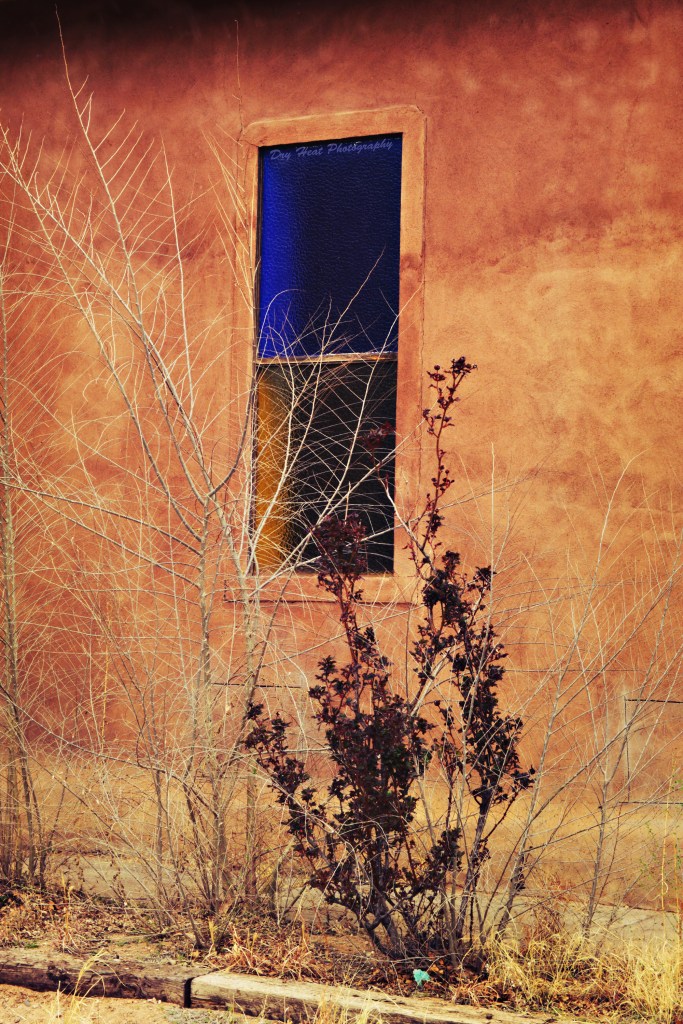


Owl Bar & Cafe, home of the original green chile cheese burger
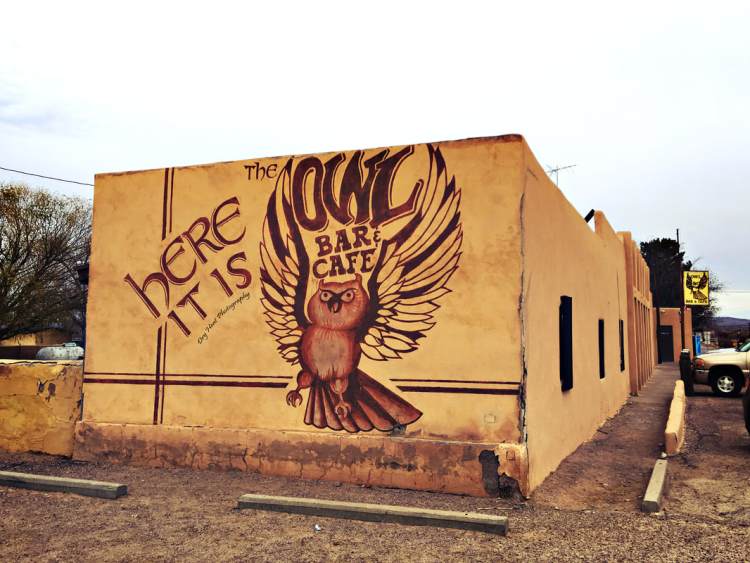
Without a doubt, The Owl Bar & Cafe is a must-try restaurant for anyone visiting San Antonio, New Mexico. This is the home of the original green chili cheese burger and it has quite a history too!
Frank Chavez and his wife, Dee opened the Owl Bar in 1945 and it soon became the hangout for a handful of “prospectors” who had recently moved to town. Turns out these folks were actually the atomic scientists who went on to detonate the world’s first atomic bomb at the Trinity Site on July 16, 1945. Incidentally, the Trinity Site is only 28 miles from San Antonio! And, of course, these atomic bombs were later used to decimate two Japanese cities at the end of World War II.
In 1948, at the request of his patrons, Frank put in a grill behind the bar and started serving hamburgers. Frank didn’t serve just any ole’ plain Jane burgers, he put his own spin on the traditional burger and the “Owl Burger”, featuring cheese and Frank’s special green chili sauce, was born! The recipe remains unchanged to this day.
Frank and Dee passed the family business on to their daughter Rowena and her husband Adolph Baca. On June 1st, 2018 Rowena and Adolph again passed the business on to their daughter, Janice, and she continues to own and operate the Owl Bar & Cafe today.
On another historical side note, the actual bar top in the Owl came from Gus Hilton’s Mercantile Store. The Mercantile burned down in the early 1940’s but the hand crafted wooden bar was saved and later installed in the Owl Bar when it opened in 1945. A commemorative plaque on the bar reads “Registered Cultural Property of the State of New Mexico”.
Today, the Owl Bar & Cafe is a popular lunch spot for tourists and photographers coming and going from the Bosque Del Apache National Wildlife Refuge.

Abandoned Houses in San Antonio, New Mexico
Folks, there are a lot of abandoned houses in San Antonio. If this is what you were looking for, you came to the right place. I don’t think I even made it to the “historical district” because I’ve seen a lot of photos in my research of buildings that I never saw when I was there. My time in San Antonio was hurried due to the impending rainstorm that was already starting when I arrived so I shot as much as I could before the deluge began.
San Antonio is technically not a ghost town but it is rapidly becoming that way. There are an alarming number of abandoned houses and other buildings. This town is hanging on by a thread and now, with concerns over Covid-19 limiting tourism and causing Bosque del Apache to close it’s gates to the public, it just might be the last nail in the coffin.
It’s possible that I should do research first and then go shoot but that’s not usually what happens. Most of the time I go out looking for cool stuff to shoot and then figure out what to write about it later, such is the case here.
The house in the photo below is behind the San Antonio Mission Church. I didn’t want to run across the parking lot in the rain so I shot it from my car with a 300mm lens. As you can see, the house is unstable so don’t make it angry. You wouldn’t like it if it was angry.

The house seen in the two pictures below was on a side street near the Owl Bar & Cafe.
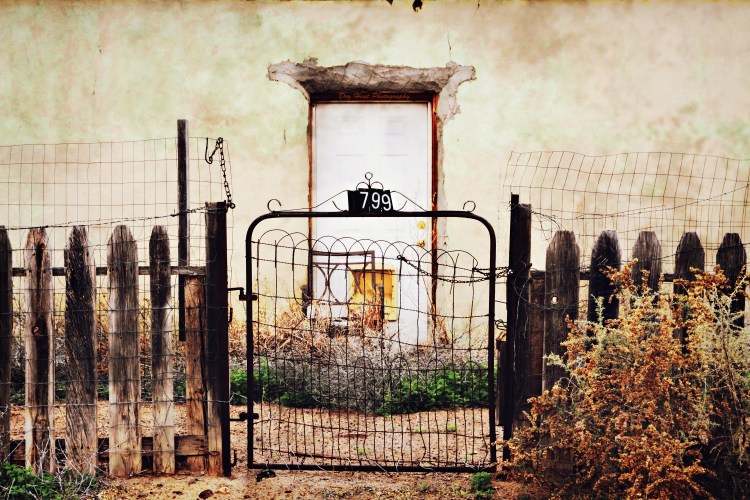

This little white house and the big yellow house are across the street from each other directly behind the Owl Bar & Cafe.


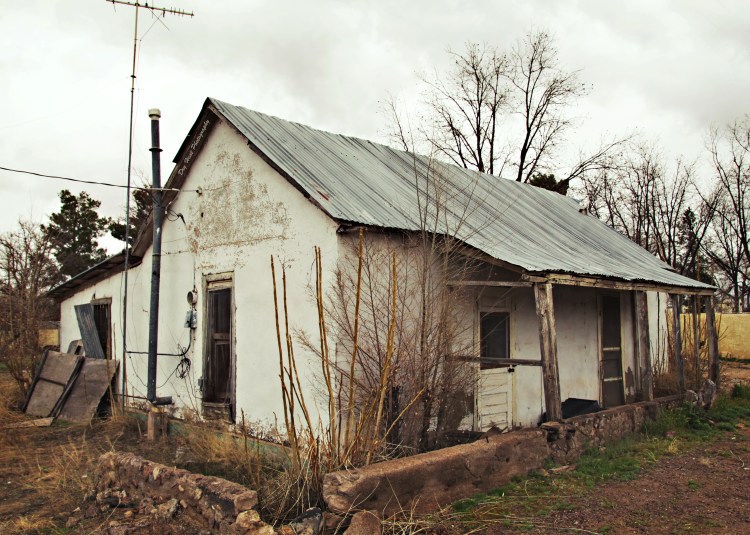
This yellow house looks like it was very nice once upon a time. Note the swing in the front yard plus porch and patio and I think that’s a grain silo off to the side behind the propane tank.

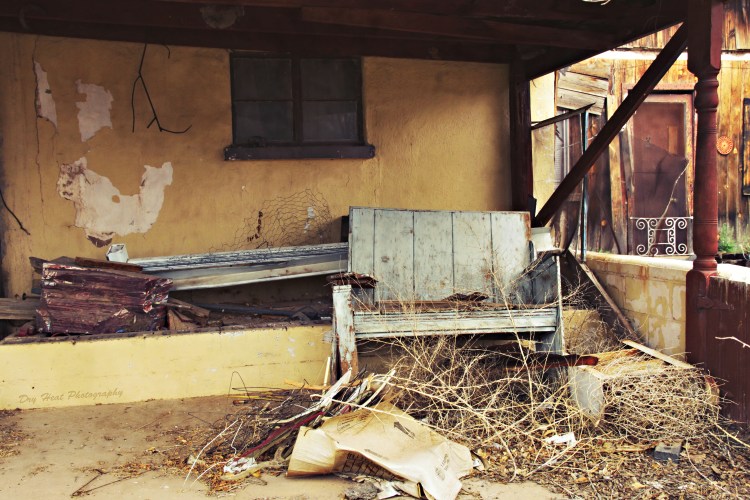

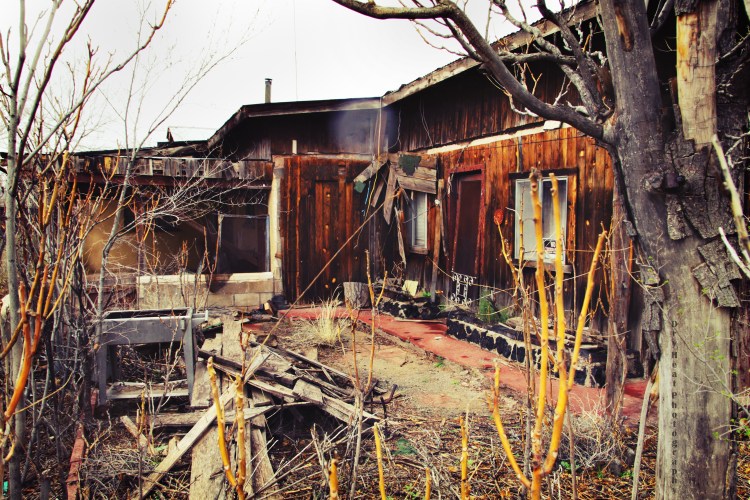
These next two houses are also across from each other on a side street. We drove up to the gate of the big house and I shot the little grey house with a long lens from the driveway of the first house.


Author’s Note
These photos were shot on March 8, 2020 and originally posted to the Dry Heat Blog on March 28, 2020.





